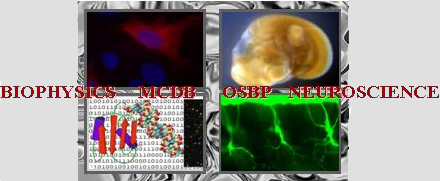Poster abstracts
Poster number 56 submitted by Jillian Poska
In utero exposure to estrogenic bisphenol compounds affects the mammary gland microenvironment through epigenetic mechanisms
Jillian M. Poska (Ohio State Biochemistry Program), Clarissa Wormsbaecher, Brittney M. Cumbia (Department of Molecular Genetics, James Comprehensive Cancer Center), Madeline R. Price (Department of Molecular Genetics), Marcos Cortes-Medina, Jacob Holter (James Comprehensive Cancer Center, Department of Biomedical Engineering), Jonathan W. Song (Department of Biomedical Engineering, Department of Mechanical and Aerospace Engineering)
Abstract:
In utero exposures to estrogenic endocrine disrupting compounds (EDCs) can increase breast cancer risk in adulthood. Bisphenol A (BPA) is an estrogenic EDC that alters mammary gland development and increases mammary gland tumorigenesis in rodent models following in utero exposure. Our lab has previously shown in utero BPA exposure induces alterations to the tissue microenvironment that are conducive to tumor initiation. However, it is unclear what molecular mechanisms drive changes to the microenvironment and how this is propagated to adulthood. In the present study, the mammary glands of embryonic or adult mice exposed in utero to BPA were used to isolate primary cells for ATAC-seq, qPCR, and single nuclei (sn) RNA/ATAC sequencing to determine the epigenetic targets of BPA exposure. Changes to the microenvironment and their consequences were measured by collagen staining and tissue stiffness. Our results indicate that BPA causes developmental reprogramming of mammary fibroblasts that persists into adulthood. ATAC-seq revealed changes in chromatin accessibility specifically in fibroblasts, but not epithelial cell populations. snRNA/ATAC-seq was used to further link these changes to transcriptional reprogramming and investigate if changes at exposure are propagated to adulthood. qRT-PCR of collagen genes in fibroblasts at different timepoints following in utero exposure allowed us to pinpoint the timing of transcriptional changes caused by BPA. Functional consequences of these changes measured by increased tissue stiffness were correlated to estrogen receptor alpha using bisphenol analogues with varying abilities to activate the receptor. Together, these studies provide insight into how EDCs influence mammary gland development and increase breast cancer risk following in utero exposure.
Keywords: endocrine disrupting compounds, breast cancer, fibroblasts
